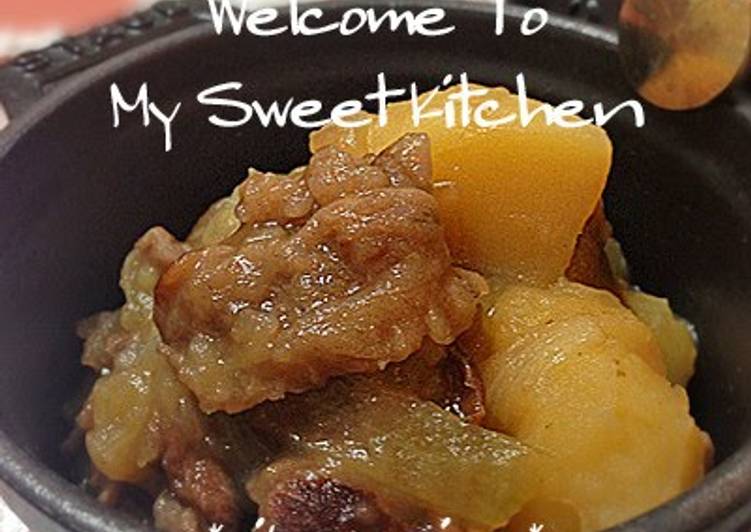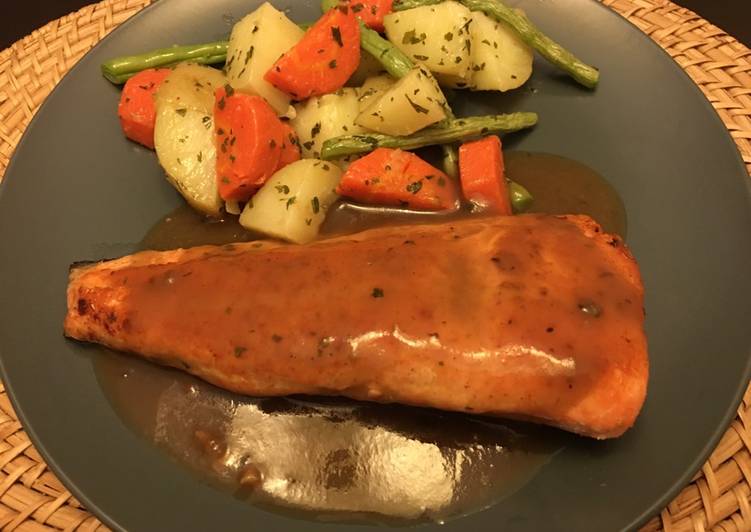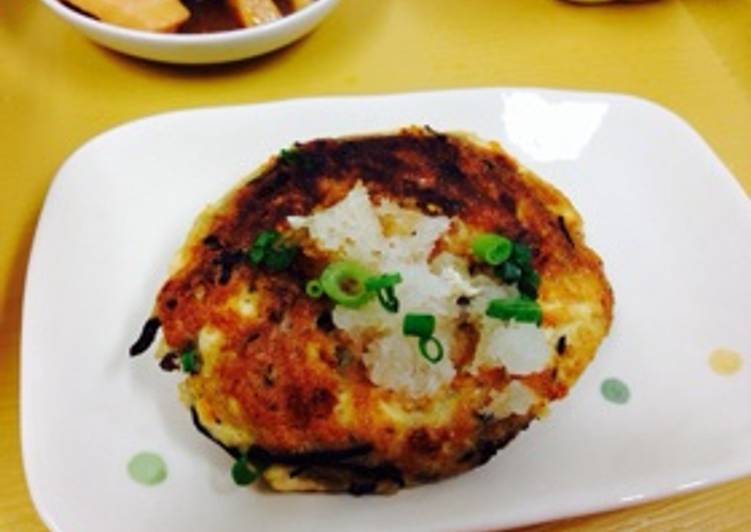
Hey everyone, it’s Brad, welcome to our recipe page. Today, I will show you a way to make a distinctive dish, waterless nikujaga (simmered meat and potatoes) in a staub cocotte. It is one of my favorites food recipes. For mine, I will make it a bit unique. This will be really delicious.
Nikujaga (Japanese: 肉じゃが) literally means "meat and potatoes", from two Unlike Western stews, the simmering time is much shorter because nikujaga uses thinly sliced meat. Nikujaga is one of the most popular Japanese comfort food, the delicious dish includes sliced beef. Nikujaga quite literally translates to "meat and potatoes" - niku means "meat" and jaga means "potatoes" in Japanese. It's a comfort food and the Japanese version of beef stew.
Waterless Nikujaga (Simmered Meat and Potatoes) in a Staub Cocotte is one of the most well liked of recent trending meals on earth. It’s easy, it’s quick, it tastes delicious. It’s enjoyed by millions every day. Waterless Nikujaga (Simmered Meat and Potatoes) in a Staub Cocotte is something that I’ve loved my entire life. They’re fine and they look wonderful.
To get started with this particular recipe, we have to prepare a few components. You can cook waterless nikujaga (simmered meat and potatoes) in a staub cocotte using 10 ingredients and 19 steps. Here is how you cook that.
The ingredients needed to make Waterless Nikujaga (Simmered Meat and Potatoes) in a Staub Cocotte:
- Take 100 grams "A" Thinly sliced beef (cut into bite-sized pieces)
- Take 3 "A" Potatoes (cut into 3-4 cm chunks)
- Get 1 large "A" Onions (thinly sliced into about 1.5 cm slices)
- Get 1 1/2 tbsp "B" Sugar
- Take 2 tsp "B" Mirin
- Prepare 1 tbsp "B" Sake
- Make ready 1 tbsp "B" Soy sauce
- Make ready 4 pinch "B" Dashi stock granules
- Prepare 1 tsp "C" Soy sauce
- Get 1 Vegetable oil (or beef fallow)
This is a typical Japanese homemade simmered dish, every. It's a classic Japanese homecooking dish- savory potatoes and beef that have been fast simmered in a sweetened soy sauce! The Japanese navy chefs were ordered to create a version of. Nikujaga literally translated is meat and potatoes.
Instructions to make Waterless Nikujaga (Simmered Meat and Potatoes) in a Staub Cocotte:
- Cut up the "A" ingredients. The size of the potatoes and carrots will affect the cooking time, so be sure to cut as instructed in the ingredients list.
- Heat a little oil (or beef fallow) in a Staub cocotte over medium head. Then, add the thinly sliced beef and cook until brown.
- Once browned, add the onions and potatoes from Step 1 and cook together.
- When the onions and potatoes are thoroughly coated in the oil, add the "B" seasonings and mix well.
- Once the seasonings have evenly coated the ingredients, cover with the lid and simmer for about 30 seconds over medium heat.
- After 30 seconds, reduce the heat to low. Then, set a timer for 10 minutes.
- After 10 minutes, open the lid and add the "C" soy sauce and mix well. Replace the lid and set the timer for 10 minutes.
- After 10 minutes, turn off the heat. Let sit with the lid on for 30 minutes to 1 hour to let it cool, allowing the flavors seep in.
- After at least 30 minutes, mix lightly without crushing the potatoes. *You can do this with a small wooden spoon, if you like.
- And now your super-delicious nikujaga is ready. The potatoes are so nice and fluffy, using only the moisture from the seasonings and vegetables.
- By allowing it to cool first, the flavors will really sink in and become delicious. Heat it up again just before serving.
- [Guideline for the ingredient amounts:] When you put all the ingredients into the cocotte (16 cm diameter), they should fill up about 80-85% of the cocotte, and the amounts of the listed seasoning ingredients should be just right.
- One of our family members dislikes carrots, so we don't add carrots. If you add carrots, replace a portion of the potatoes with the carrots.
- After trying some variations, I found out that if you use less ingredients (for example, about half), then it will turn out like sukiyaki.
- Adjust the amount of ingredients according to the size of your cocotte.
- [Note:] Since this recipe doesn't use any water, the amount of onions is very important for their moisture content.
- Don't reduce the amount of onions in favor of adding more potatoes and/or carrots.
- If you add vegetables with a high moisture content, there will be more liquid, so the outcome of the taste and fluffiness of the potatoes will be different.
- If you use vegetables with a high moisture content, reduce the amount of onions or let the moisture evaporate a bit with the lid open before turning off the heat in Step 8.
The Japanese navy chefs were ordered to create a version of. Nikujaga literally translated is meat and potatoes. And this is one version you can make with dashi. There are all kinds of variations on nikujaga since it's a popular comfort food. Like any stew or long simmered food, it will taste even better the next day.
So that is going to wrap this up with this special food waterless nikujaga (simmered meat and potatoes) in a staub cocotte recipe. Thank you very much for your time. I am confident you can make this at home. There’s gonna be more interesting food in home recipes coming up. Don’t forget to save this page in your browser, and share it to your loved ones, colleague and friends. Thanks again for reading. Go on get cooking!

